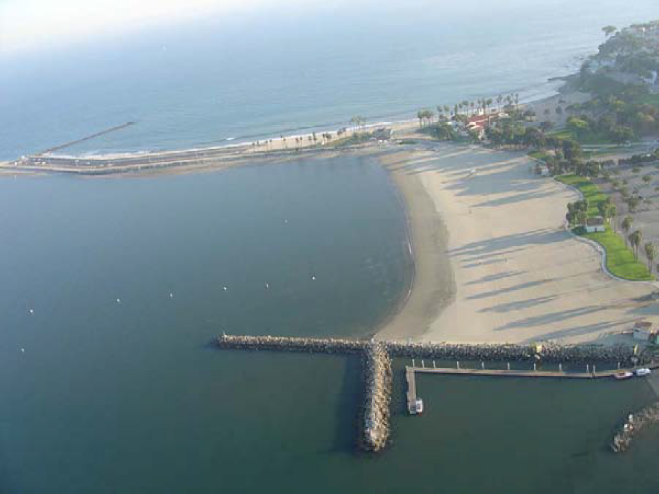SCCWRP to test new EPA health risk model at Inner Cabrillo Beach

SCCWRP in May will launch a first-of-its-kind study aimed at ascertaining whether high fecal indicator bacteria Ievels at Inner Cabrillo Beach in the Los Angeles Harbor area are indicative of a health threat to beachgoers who enter the water.
The study involves using a health risk model known as Quantitative Microbial Risk Assessment (QMRA), which was recently endorsed by the U.S. Environmental Protection Agency to quantify the risk of gastrointestinal illness from waterborne contamination at the beach. Inner Cabrillo Beach is a popular swimming area in San Pedro that receives about half a million beachgoers annually.
For the past 15 years, beach water-quality managers have worked without success to reduce the concentration of a type of fecal indicator bacteria called Enterococcus, which is periodically found at levels that exceed water-quality guidelines. Managers have spent more than $20 million on structural and nonstructural improvements, including testing and replacing sewer collection lines and installing bird exclusion devices designed to reduce avian fecal matter.
Performing a QMRA at the beach will offer important new insights into how much risk is associated with swimming at Inner Cabrillo Beach. If the contamination is coming from human sources, such as leaking sanitation infrastructure, it would pose a greater human health risk than if the contamination were coming from non-human sources, such as dogs and seagulls.
QMRAs are designed to estimate health risks on a site-specific basis using a dose-response model that factors in the concentration of the pathogens in the water, the volumes of water being ingested, and the pathogens’ infectivity to humans. The EPA recommends using QMRAs only when a beach is contaminated with non-human bacterial sources.
The SCCWRP-led study will mark the first time a QMRA has been conducted at a California marine beach in dry weather, setting a precedent for how to conduct QMRAs of this type in the future.
For more information, contact Ken Schiff.
More news related to: Microbial Risk Assessment, Microbial Source Tracking, Microbial Water Quality, Top News